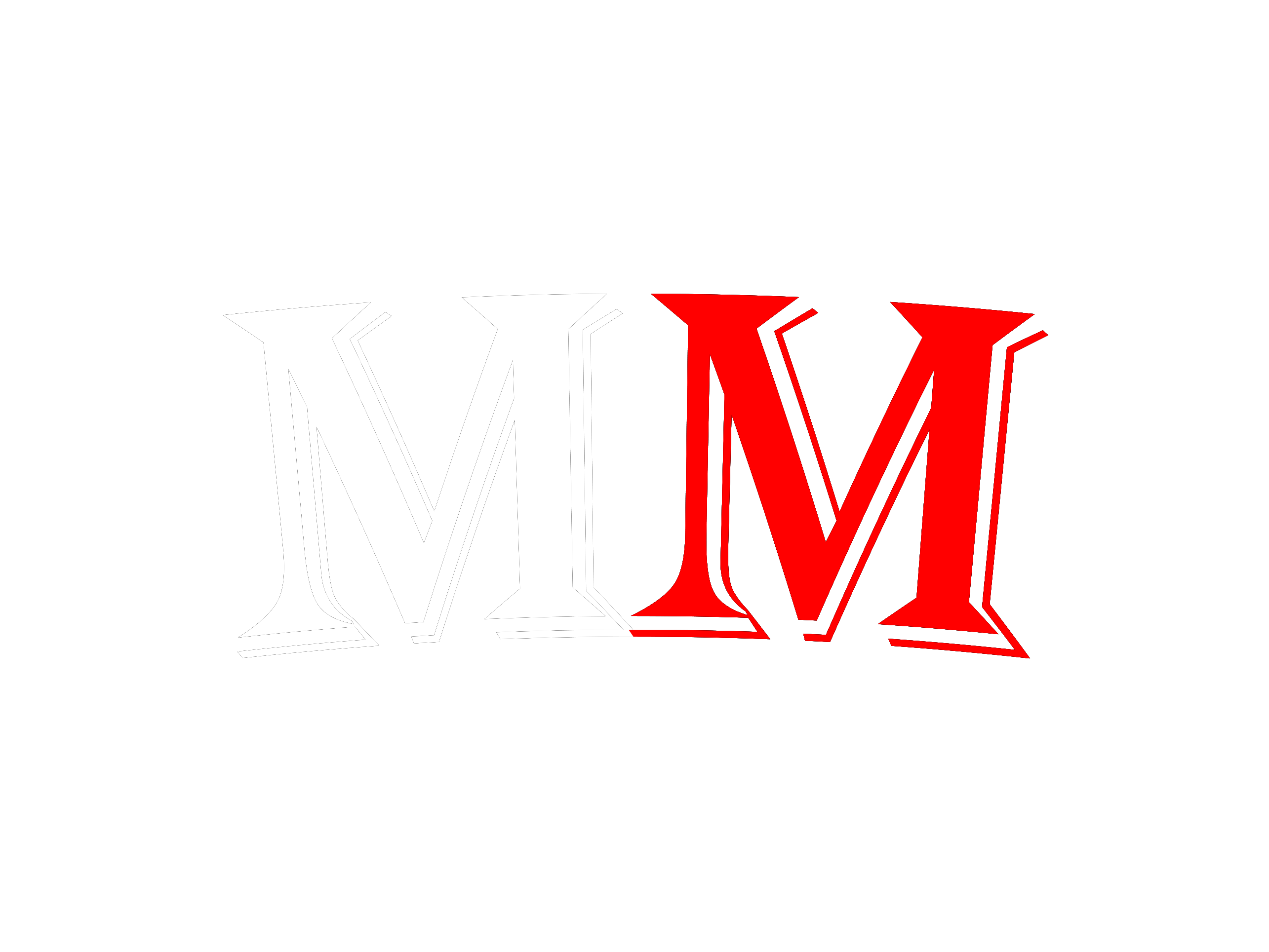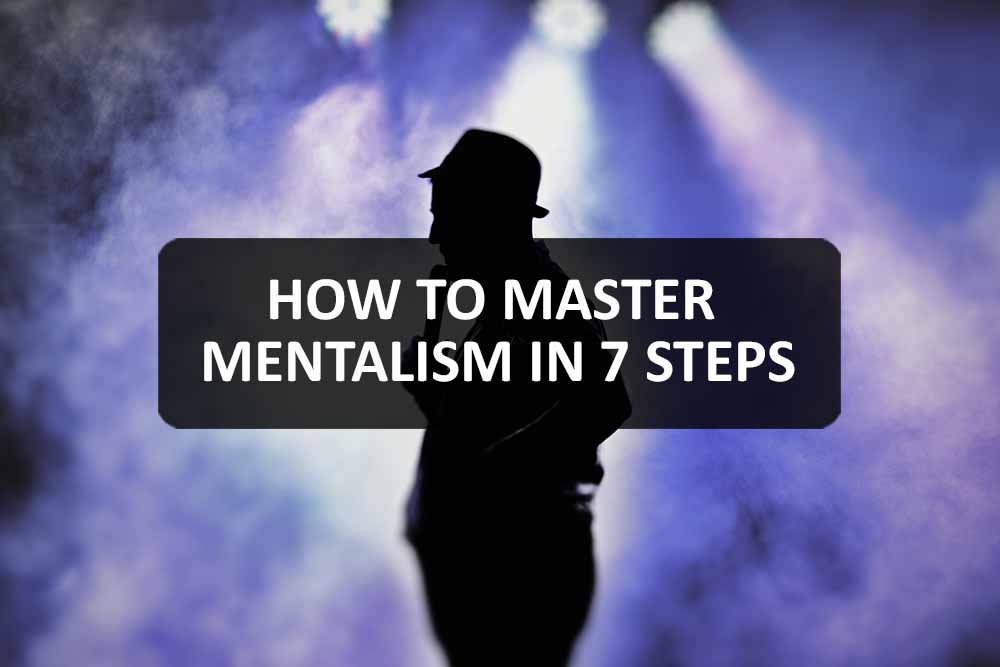The road to becoming a professional mentalist is long and often demanding — but not impossible.
There’s a lot that goes on behind the scenes that allow mentalists to give the illusion that they have extrasensory powers.
Truth is, learning mentalism can be challenging, but you can always make it more enjoyable to suit your tastes.
If you want to make a career out of this, you need to be diligent, patient, and willing to put in the hours of practice.
But where do you begin?
In this article, we’ll tell you how to master mentalism in 7 steps.
So let’s begin!
Step One: Learn the Basics
Mentalism is always defined as performance art. But more than the show that you’re putting on, you need to know the elements that comprise a mentalist act.
Mentalism performances can be broken down into four components:
- Effects are what the audience thinks is occurring, whether it be spoon-bending or mind reading.
- Techniques are the different ways you work to get the effect that you want.
- Devices are props you use to deliver the effect. You’ll notice, though, that mentalists rarely use devices — these are typically more common in magic tricks than in mentalism acts.
- Performatives are the things you do during your performance. These are often soft skills that enhance the overall result of your routine.
Step Two: Invest in Your Education
There’s a lot of material floating around the web — there’s no scarcity in the number of videos showing how mentalism tricks are done.
But if you want to master mentalism and become a professional, you may want to invest in something that’s guaranteed to bring good results.
Start with getting your hands on books on mentalism. Carida’s book on the 13 Steps to Mentalism is always an ideal place to start. You can also try books written by modern mentalists such as Derren Brown (Tricks of the Mind) and Max Maven (Prism: The Color Series of Mentalism).
You can even expand your reading list to include skills you’ll eventually study, such as reading body language. What Every Body is Saying: An Ex-FBI Agent’s Guide to Speed Reading People by Joe Navarro is something that could be helpful for beginners.
If you want a more structured learning experience, you can save up and enroll in a mentalist course such as Mentalism and Mind Reading. It prevents you from getting overwhelmed with the amount of information you come across and won’t leave you to your own devices.
Step Three: Build in a Practice Routine to Your Schedule
If you ask professional mentalists how they got to where they are, you’ll get different responses — after all, every person’s journey is different.
But one thing you’ll hear is the number of hours they put in practicing their craft. It ultimately sets professionals apart from amateurs.
Having an in-depth knowledge of the different mentalism components is one thing, but actually doing them is completely different.
A trick may seem simple when you’re studying it. It even seems easier when you’ve seen a video of it online — but just like anything you’re doing for the first time, you may find it unbearably uncomfortable.
If you give up at this point, then it’ll be the beginning of the end for you. Things will get easier — but only if you spend time doing it repeatedly until it becomes rote memory.
One of the biggest challenges when it comes to practicing mentalism is that there will be days when you won’t want to do it. It’s something that happens to everyone, but waiting for the “right mood” to practice is detrimental to your development.
Setting a schedule and sticking helps overcome this challenge. Practicing mentalism is like working out — you get the best results when you do it regularly. Continuing that comparison to working out, having a partner often provides the additional push you need.
Step Four: Figure Out Who You are Onstage

Mentalism is performance art, with the mentalist as the performer.
Although you don’t need to create a character complete with backstory, it’s a good idea to have a persona you stick to as a mentalist. Another thing that’s encouraged is making it distinct from your actual persona.
There was a time when mentalists presented themselves as individuals with supernatural abilities, but audiences today won’t find this impressive.
Mentalists now are pretty upfront about not having any superhuman skills — they admit to not being able to read minds, instead are experts in human behavior and the field of psychology.
There is no right way to create your mentalist persona, but to guide you, here are some questions you can ponder about how you’re going to be when you’re onstage:
- Will you be serious or humorous?
- Will you be a chatterbox or a man of few words?
- Will you work fast or slow?
Try to avoid answers that fall in between — although you’ll always have to do a bit of adjusting during performances depending on your audience’s response, answering everything with “it depends” won’t help you in the long run.
Whatever you decide on, make sure it’s a persona you’re comfortable with. It may affect your performance if you aren’t. Although your mentalist personality shouldn’t be a replica of who you really are, it should feel like a natural extension of yourself.
Step Five: Script Out Your Performance
Even after spending hours practicing different techniques to achieve your desired effects, it doesn’t give you the license to just get up on stage and wing it.
The ability to improvise is handy, but nothing beats having a standard routine that you can perform with absolute confidence.
Start simple — pick three mentalism tricks and work them into a structured routine with a strong storyline. Ensure that these three acts should build on each other.
The first can be something simple, serving as an introduction that grabs the audience’s attention. Following it is your second act, which is similar to the first, but a bit more complex. Then top everything off with a strong third trick that leaves the crowd wanting more.
If you’re anticipating an encore, keep another trick in your back pocket.
Scripting, however, isn’t just determining the “what” of your performance, it also includes the “how”. Once you’ve decided on which tricks you’ll use for your routine, practice it with patter. It is what you’ll be saying to the audience while you’re doing your trick.
Sometimes, you put so much effort into learning the trick that you end up having awkward pauses or dead air while you’re doing it. Remember that it’s a performance — even if you’ve memorized every step of your act, you won’t get the response you want if you do it in complete silence.
Step Six: Use Your Audience’s Responses to Make Adjustments
Similar to a lot of performances, there’s nothing like delivering the real thing to help you realize what else you can improve. It’s not just about getting applause at the end of your performance. Although that’s always a great experience, study how the audience responds to your entire act.
How did they respond to your patter? Did they laugh at the joke that you threw in, or did it fall flat? Did their responses get progressively better as you went from your first to your last act?
If reactions were different from what you were expecting, it may be a good idea to revisit your performance’s script and structure.
Another good way to get feedback is to spend some time with your audience after your performance. People are comfortable pointing out which tricks they found the most interesting — this tells you which part of your act works the best.
Step Seven: Become Part of a Community
To master mentalism, you need a lot of practice and constructive feedback.
Who better to help you with these but other mentalists?
Surrounding yourself with other mentalists who are just as passionate about their craft as you can provide the kind of support that your non-mentalist friends may not be able to give.
Putting It All Together
No one said the road to mastering mentalism was going to be easy.
Oftentimes it’s long, winding, and frustrating. But if you take it seriously, invest your time and resources, one day the hours of practice you put in will pay off.
The day will come when the routine you so carefully put together snaps into place — and you’ll go through your tricks and your patter as though you’ve been doing it for years.
But you have to start your journey at some point — and there’s no better time than now.

